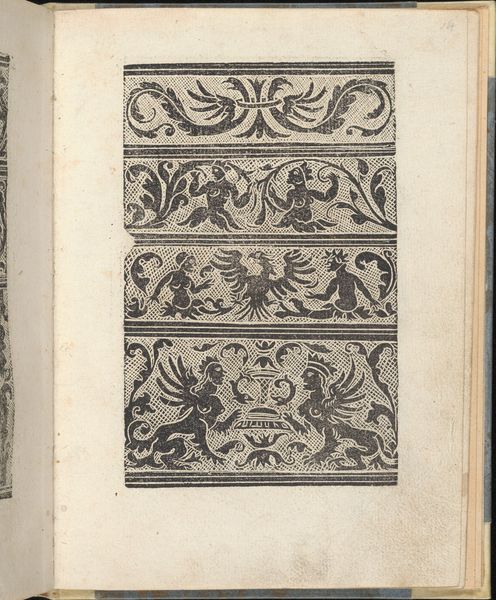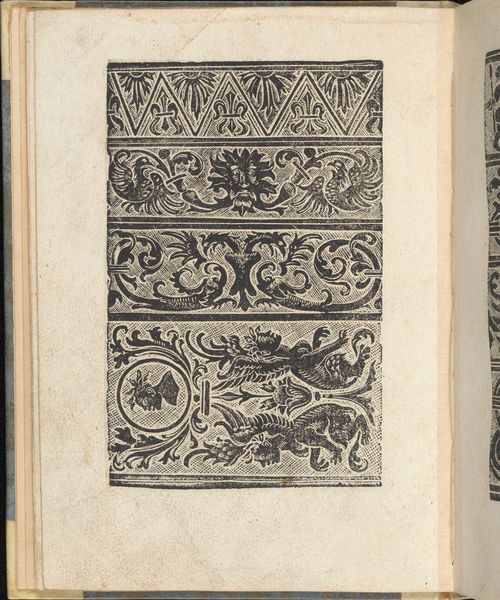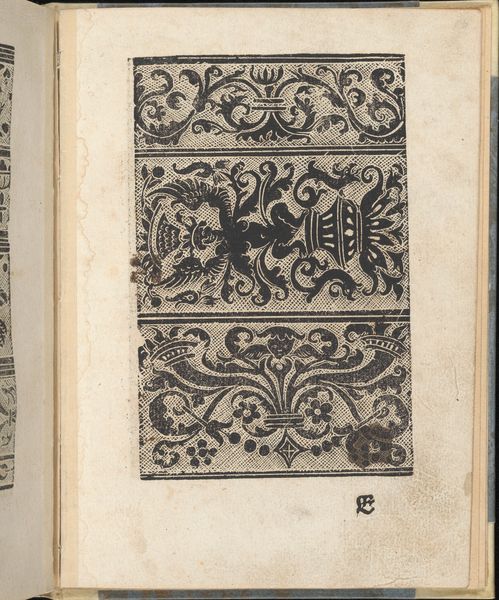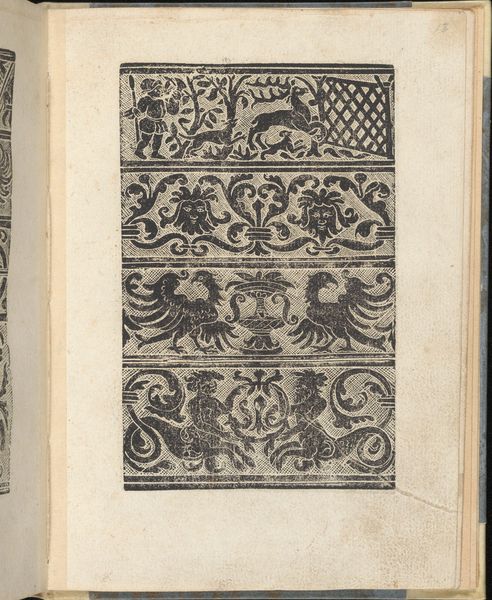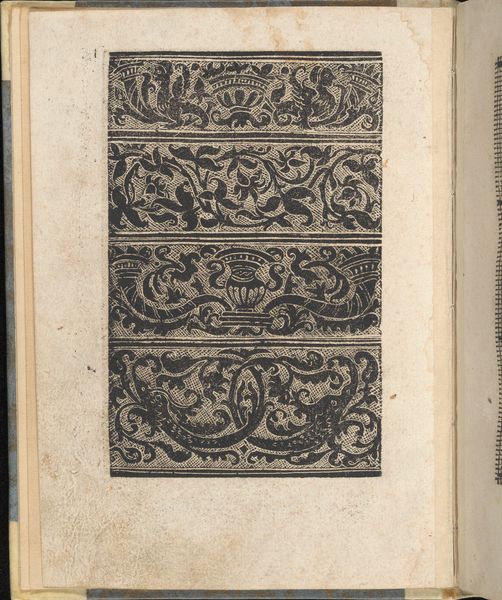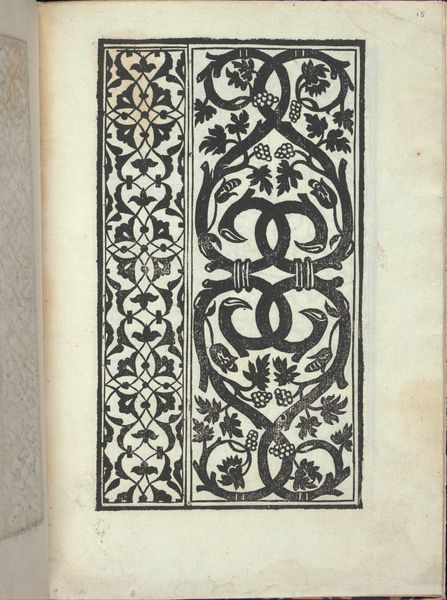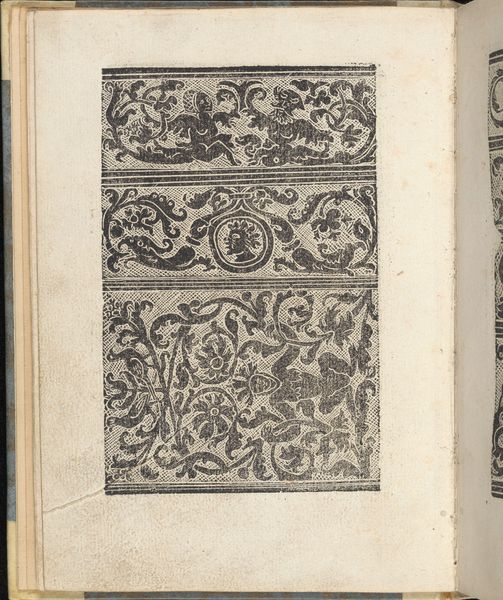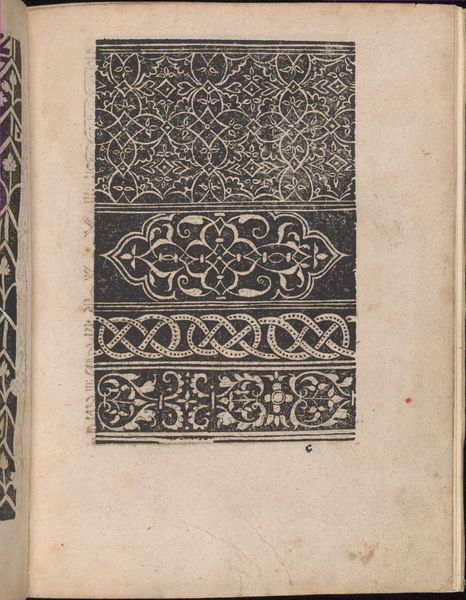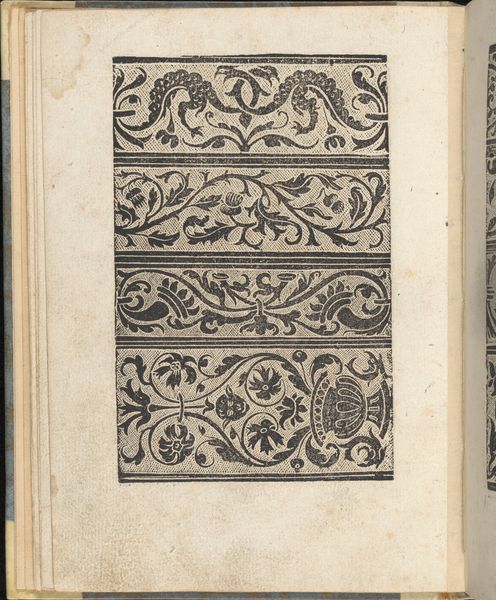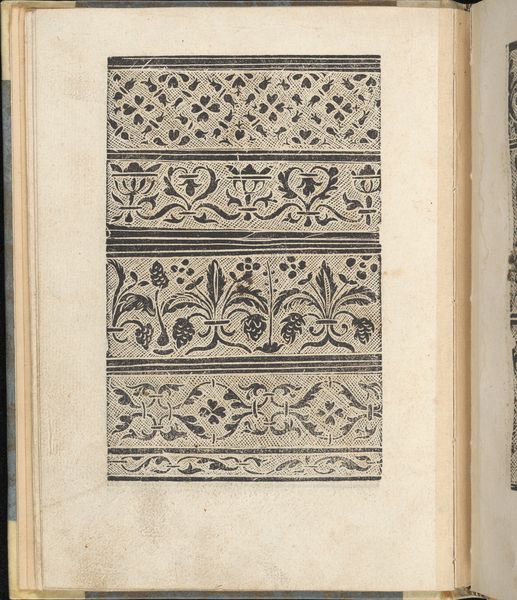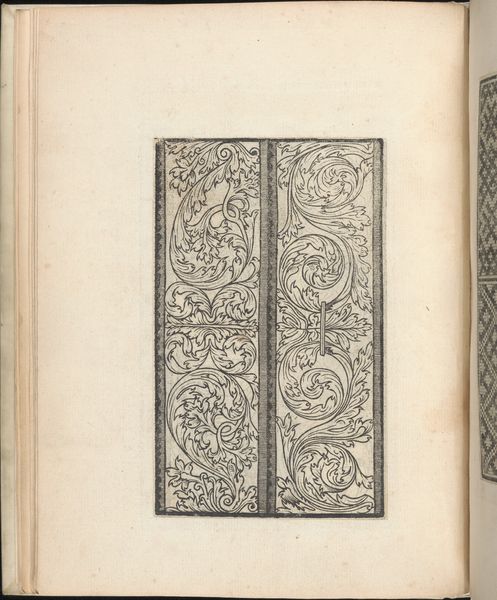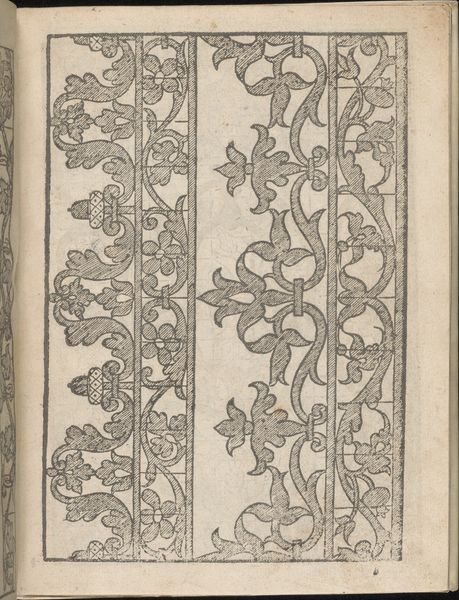
Ein ney Furmbüchlein, Page 12, recto 1520 - 1530
0:00
0:00
drawing, graphic-art, print, woodcut
#
drawing
#
graphic-art
# print
#
book
#
sketch book
#
bird
#
woodcut
#
line
#
northern-renaissance
#
decorative-art
Dimensions: 7 7/8 x 6 1/8 in. (20 x 15.5 cm)
Copyright: Public Domain
Editor: So, here we have page 12, recto, from *Ein ney Furmbüchlein*, created by Johann Schönsperger the Younger between 1520 and 1530. It’s a woodcut, a page from what looks like a book of patterns. I’m really struck by the intricate detail within these dense, vertical bands. What do you see as the most important elements in this work? Curator: Formally, the strong, clear lines and the contrasting use of black and white are crucial. These create a series of visually distinct vertical panels. Observe the density of the patterns and how the artist manipulates positive and negative space within each register. Editor: Each register does have a different kind of geometry, doesn't it? Some are figurative, some botanical, others… something else! How do those play into the piece overall? Curator: Precisely. The varying textures and motifs engage the eye in different ways. We might analyze them separately as studies in form; together, they create an interesting rhythm. Consider the interplay between the organic, curvilinear forms and the more rigid, geometric shapes. What does that tension evoke for you? Editor: I think the varying shapes and levels of detail definitely lead my eye all over the image, almost creating a sense of movement despite it being a static, printed page. I am wondering now if there are specific historical precedents to these motifs? Curator: Potentially. That however, is outside the purview of formalism. Our primary concern is not what these shapes *represent* but how their presence affects our perception of the image, considered solely as a self-contained unit. The interplay of line, form, and balance within these framed borders. Editor: So by focusing on composition and the interplay of line and shape, we appreciate its structure independently of its historical significance? Curator: Exactly. By concentrating on its visual construction, we avoid potentially misleading iconographic associations and achieve an understanding of the work grounded in what is tangibly *there*. Editor: That's interesting, it's about observing rather than interpreting the marks. Thank you, I have new appreciation for how it's arranged.
Comments
No comments
Be the first to comment and join the conversation on the ultimate creative platform.
